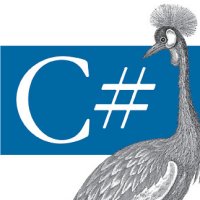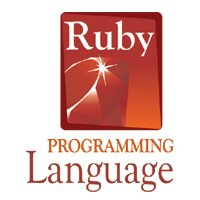Main Page
From eqqon
| (34 intermediate revisions not shown) | |||
| Line 1: | Line 1: | ||
| + | __NOTOC__ | ||
| + | <div style="margin-left:100px; margin-right:100px;"> | ||
<div style="text-align:right;"> | <div style="text-align:right;"> | ||
;site overview | ;site overview | ||
| - | ; | + | ;Audio | [[Audio]] <small>| [[Audio/AudioWorx|AudioWorx]] | [[Audio/Variodyn/AudioWorx D1 Terminal|AudioWorx D1 Terminal]]</small> |
| - | ; | + | ;C# | [[CSharp]] <small>| [[SQLite and CSharp]] | [[GitSharp]] | [[Closing the Gap Between IEnumerator and IEnumerable|Closing the IEnumerator gap]] | [[Ruby-like instance variable syntax in C-Sharp|Ruby-like variable syntax]] | [[Navigating in Exception Stack Traces in Visual C-Sharp|Navigating in Exception Stack Traces]] </small><br> |
| - | ; | + | ;RUBY | [[Ruby]] <small>| [[The Future of Ruby]] | [[Ruby C Extension]] | [[FoxGUIb]] | [[FoxGUIb/FAQ]]</small><br> |
| + | ;Blogs <small>| [[User:Henon|Henon]] | [[User:Zelenka|Zelenka]]</small> | ||
</div> | </div> | ||
| + | <div style="clear:both;"></div> | ||
| - | - | + | |
| + | <div style="float:left; margin-right:20px; ">[[Image:Mischpult.jpg]]</div> | ||
| + | <div> | ||
=[[Audio]]= | =[[Audio]]= | ||
| + | {{ArticleTeaser | ||
| + | |pagelink=[[Products/Director|director]] | ||
| + | |iconlink={{clickpic|Products/Director|http://www.eqqon.com/images/thumb/7/71/Director_V1.4_Splash.png/40px-Director_V1.4_Splash.png}} | ||
| + | |headline=Public Address Management Software | ||
| + | |author=eqqon GmbH | ||
| + | |intro=The '''director''' is a Public Address Management Software. You get a fast overview your system's status and can operate life- or text calls easy from a graphic user interface. | ||
| + | }} | ||
| + | |||
| + | |||
| + | {{ArticleTeaser | ||
| + | |pagelink=[[Audio/Variodyn/AudioWorx D1 Terminal|AudioWorx]] | ||
| + | |iconlink={{clickpic|Audio/Variodyn/AudioWorx D1 Terminal|http://www.eqqon.com/images/thumb/0/09/Awx_terminal_2008_01_27.png/60px-Awx_terminal_2008_01_27.png}} | ||
| + | |headline=D1 Terminal | ||
| + | |author=eqqon GmbH | ||
| + | |intro=The '''AudioWorx D1 Terminal''' is a text based Terminal developed for interaction with Variodyn D1 DOM devices via TCP/IP Telnet (port 23) or EIA232 serial interface. Several features support you to get easier access to the command line interface of the D1 DOM. | ||
| + | }} | ||
| + | |||
| + | |||
| - | |||
| - | |||
</div> | </div> | ||
| - | + | <div style="clear:both;"></div> | |
| - | + | ||
| - | + | ||
| - | + | ||
| - | + | ||
| - | - | + | |
| - | <div style=" float:right;">[[Image: | + | <div style="float:left; margin-right:20px; ">[[Image:CSharp.jpg]]</div> |
| + | |||
| + | = [[CSharp|C#]] = | ||
| + | '''C# is very powerful while still remaining amazingly fast.''' But the language alone is not as effective as using it together with the Visual Studio IDE. The resulting developer performance is unbelievably high. Never before have software developers been more productive. [[CSharp|C# Articles ...]] | ||
| + | |||
| + | |||
| + | <div style="clear:both;"></div> | ||
| + | |||
| + | |||
| + | <div style="float:left; margin-right:20px; ">[[Image:Ruby-logo.jpg]]</div> | ||
=[[Ruby]]= | =[[Ruby]]= | ||
'''The Future of Ruby!''' | '''The Future of Ruby!''' | ||
| - | Yukihiro Matsumoto's C implementation of [[Ruby]] aka | + | Yukihiro Matsumoto's C implementation of [[Ruby]] aka ''M''ain ''R''uby ''I''mplementation is considered the '''Quasi-Standard of the Ruby Language''' since there has never been an explicit language standard for Ruby. As the number of implementations grows, however, a formal standard seems to become necessary to prevent the horror scenario of various non-conform interpreters. [[The Future of Ruby|Read on ...]] |
---- | ---- | ||
| - | '''Extending Ruby with C functions''' is | + | '''Extending Ruby with C functions''' is quite easy. After you have learned the principles and worked through some ambiguous usage of the API functions you can make use of the power of Ruby in a C program. Then it is possible to save time and effort by only solving the time critical tasks in C and do the complex logic in Ruby. Check out this simple tutorial and get familiar with the Ruby C extension API quickly. [[Ruby C Extension|Read on ...]]. |
| - | + | </div> | |
Latest revision as of 22:41, 25 June 2010
- site overview
- Audio | Audio | AudioWorx | AudioWorx D1 Terminal
- C# | CSharp | SQLite and CSharp | GitSharp | Closing the IEnumerator gap | Ruby-like variable syntax | Navigating in Exception Stack Traces
- RUBY | Ruby | The Future of Ruby | Ruby C Extension | FoxGUIb | FoxGUIb/FAQ
- Blogs | Henon | Zelenka
Audio
C#
C# is very powerful while still remaining amazingly fast. But the language alone is not as effective as using it together with the Visual Studio IDE. The resulting developer performance is unbelievably high. Never before have software developers been more productive. C# Articles ...
Ruby
The Future of Ruby!
Yukihiro Matsumoto's C implementation of Ruby aka Main Ruby Implementation is considered the Quasi-Standard of the Ruby Language since there has never been an explicit language standard for Ruby. As the number of implementations grows, however, a formal standard seems to become necessary to prevent the horror scenario of various non-conform interpreters. Read on ...
Extending Ruby with C functions is quite easy. After you have learned the principles and worked through some ambiguous usage of the API functions you can make use of the power of Ruby in a C program. Then it is possible to save time and effort by only solving the time critical tasks in C and do the complex logic in Ruby. Check out this simple tutorial and get familiar with the Ruby C extension API quickly. Read on ....




